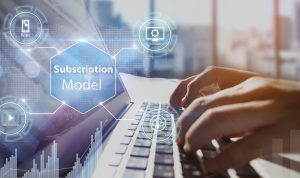How to Make Education More Accessible for Students with Disabilities is a vital conversation in today’s educational landscape. With the ever-increasing awareness of diversity, it’s crucial to understand the various challenges faced by students with disabilities. From physical barriers to outdated curriculum structures, these students often encounter obstacles that hinder their learning and growth. By delving into the nuances of accessibility, we can explore effective strategies that ensure every student has an equal opportunity to thrive in their educational journey.
This discussion not only sheds light on the types of disabilities present in educational settings but also emphasizes the significance of implementing accessible practices. Through understanding the legal frameworks, innovative technologies, and inclusive curricula, we aim to foster an environment where all students can succeed. Each step taken in this direction promotes a more inclusive and equitable learning atmosphere, benefiting everyone involved.
Understanding Disabilities in Education
In the realm of education, it is essential to recognize the diverse range of disabilities that affect students. Disabilities can vary widely, impacting students’ learning experiences and their ability to access educational resources. Understanding these disabilities is the first step towards creating an inclusive learning environment.Students with disabilities can face a variety of challenges in traditional educational settings. Disabilities may include physical impairments, sensory processing disorders, cognitive and learning disabilities, emotional and behavioral disorders, and communication challenges.
For instance, physical disabilities may limit mobility, while learning disabilities like dyslexia can hinder reading proficiency. According to the U.S. Department of Education, approximately 7.1 million students, or about 14% of all public school students, receive special education services under the Individuals with Disabilities Education Act (IDEA). This statistic highlights the significant presence of students with disabilities in the educational landscape.
Types of Disabilities Affecting Students
Different types of disabilities impact students in unique ways. Understanding these categories can aid educators in developing appropriate strategies and interventions. The following are the primary categories of disabilities:
- Physical Disabilities: These include conditions that affect mobility or physical functioning, such as cerebral palsy or muscular dystrophy. Students may require specialized equipment or physical accessibility features in the classroom.
- Learning Disabilities: Conditions like dyslexia, dyscalculia, and attention deficit hyperactivity disorder (ADHD) fall under this category. These disabilities can affect a student’s ability to read, write, or perform mathematical calculations.
- Emotional and Behavioral Disorders: Emotional disturbances can manifest in various forms, impacting a student’s behavior and ability to interact socially. This includes anxiety disorders or oppositional defiant disorder.
- Autism Spectrum Disorder (ASD): Students with ASD may experience challenges in communication, social interactions, and behaviors. Each student with ASD presents a unique profile of strengths and challenges.
- Speech and Language Impairments: These impairments can affect articulation, fluency, and language comprehension. Students may require speech therapy to enhance their communication skills.
Understanding these categories can significantly enhance the efforts of educators and support staff in creating tailored educational plans for students with disabilities, ensuring their needs are met effectively.
Importance of Accessibility in Education
Accessibility in education is crucial for ensuring that all learners, regardless of their abilities, have equal opportunities to succeed. It encompasses a variety of factors, including physical access to educational institutions, the availability of appropriate learning materials, and the implementation of teaching methods that cater to diverse learning needs. By fostering an inclusive environment, schools can unlock the full potential of every student, thus enriching the educational experience for all.Providing accessible education promotes inclusivity in classrooms by creating an environment where differences are embraced rather than sidelined.
When educational institutions make adaptations for students with disabilities, they not only assist those individuals but also cultivate empathy and understanding among all students. This inclusive approach helps to diminish stigmas and creates a community where collaboration and support thrive.
Examples of Accessibility Enhancing Inclusivity
Numerous examples illustrate how accessibility initiatives can enhance inclusivity in educational settings. For instance, implementing technology such as screen readers and speech-to-text software can dramatically support students with visual impairments or learning disabilities. Furthermore, providing physical access through ramps and elevators ensures that students with mobility challenges can participate fully in school activities. Adaptations such as flexible seating arrangements or adjustable desks can also cater to a wide range of physical needs, encouraging participation from all students.
Importantly, teacher training on inclusive practices ensures that all educators are equipped to meet diverse learning needs, further promoting an inclusive atmosphere.
Long-term Benefits of Accessibility for Students with Disabilities
The long-term benefits of accessibility in education for students with disabilities are profound and far-reaching. Research indicates that students who receive inclusive education are more likely to achieve higher academic outcomes and develop essential life skills. These students also tend to have improved social interactions and better self-esteem as they learn in environments that validate their experiences and abilities.Moreover, inclusive education prepares all students for a diverse workforce.
As they learn to collaborate with peers of varying abilities, they develop crucial soft skills such as empathy, teamwork, and problem-solving. These skills are invaluable in today’s job market, fostering a more inclusive society that values contributions from individuals of all backgrounds and capabilities.
“Accessibility in education is not merely a regulatory requirement; it is an ethical imperative that benefits society as a whole.”
Legal Framework Supporting Accessible Education
In the pursuit of accessible education for students with disabilities, a strong legal framework is essential. This framework includes various legislation that not only recognizes the rights of these students but also mandates that educational institutions provide the necessary accommodations. This section explores key laws and their implications in fostering an inclusive educational environment.
Individuals with Disabilities Education Act (IDEA)
The Individuals with Disabilities Education Act (IDEA) is a fundamental piece of legislation that ensures students with disabilities receive a free appropriate public education (FAPE) tailored to their individual needs. This law requires public schools to create Individualized Education Programs (IEPs) for eligible students, outlining specific educational goals and the services necessary to achieve them. Key aspects of IDEA include:
- Rights to FAPE: Every child with a disability is entitled to access educational services at no cost to the family.
- Individualized Education Programs: Schools must develop IEPs that are crafted with parental input and adapted to cater to the specific learning needs of each child.
- Least Restrictive Environment: Students with disabilities should be educated alongside their non-disabled peers to the maximum extent appropriate.
- Due Process: Parents have the right to seek resolution through mediation or a due process hearing if they disagree with the school’s decisions regarding their child’s education.
The enforcement of IDEA has significantly improved educational outcomes for students with disabilities, ensuring they have access not only to academic content but also to the resources necessary for their success.
Americans with Disabilities Act (ADA)
The Americans with Disabilities Act (ADA) plays a critical role in promoting accessibility within educational institutions beyond K-12 settings, extending its reach to colleges and universities. This landmark legislation prohibits discrimination based on disability in all public and private spaces, including schools.The implications of the ADA for educational institutions are profound, encompassing several key mandates:
- Accessibility Requirements: Schools must ensure that their facilities are accessible to students with disabilities, providing necessary modifications to buildings and resources.
- Equal Access to Programs: Students with disabilities must be afforded the same opportunities to participate in academic programs and extracurricular activities as their peers.
- Reasonable Accommodations: Institutions are required to provide reasonable accommodations for students with disabilities, which may include extended time on tests, alternative formats for materials, and assistive technologies.
The ADA’s emphasis on equal treatment and accessibility has prompted many universities to re-evaluate their policies and procedures, leading to a more inclusive environment for all students.
“The ADA ensures that all individuals, regardless of their disabilities, have equal access to education and the opportunities that come with it.”
Technological Innovations Enhancing Learning Accessibility
The landscape of education has undergone a transformative shift, particularly through the integration of technology. For students with disabilities, these advancements are not just enhancements; they are essential tools that foster independence, engagement, and successful learning outcomes. The right technological innovations can bridge gaps, providing equitable access to education in ways previously unimaginable.Assistive technologies play a crucial role in enhancing learning accessibility for students with disabilities.
These tools cater to diverse needs, ensuring that all learners can participate fully in educational experiences. From speech recognition software to adaptive learning applications, the array of available technologies is impressive and continues to grow. The advent of online learning platforms further amplifies accessibility, allowing students to engage with materials at their own pace, regardless of their geographical location or physical limitations.
Assistive Technologies for Diverse Disabilities
The following examples highlight various assistive technologies that specifically aid students with different types of disabilities. Understanding these tools is essential for educators and institutions aiming to create inclusive environments.
- Screen Readers: These programs convert text on screens into spoken words, allowing visually impaired students to access written content. Popular examples include JAWS and NVDA.
- Speech Recognition Software: Tools like Dragon NaturallySpeaking enable students with physical disabilities to control their computers and dictate text through voice, facilitating easier communication and learning.
- Text-to-Speech Tools: Applications such as NaturalReader assist students with dyslexia or reading difficulties by reading text aloud, helping them comprehend material more effectively.
- Adaptive Keyboards and Mice: Custom input devices designed for students with mobility challenges allow for easier navigation and interaction with educational content.
- Augmentative and Alternative Communication (AAC) Devices: These devices, such as communication boards or speech-generating devices, support students with speech impairments by providing alternative ways to communicate.
The rise of online learning platforms has significantly impacted accessibility in education. These platforms offer flexible learning environments that accommodate various learning styles and needs.
Impact of Online Learning Platforms
The flexibility of online learning is not merely a convenience; it’s a necessity for many students with disabilities. These platforms provide unique features that cater to diverse requirements.
- Accessibility Features: Most online platforms now include tools for screen magnification, adjustable text sizes, and closed captioning, improving usability for students with visual or hearing impairments.
- Asynchronous Learning Options: Students can learn at their own pace, allowing them to revisit materials as needed, which is particularly beneficial for those with learning disabilities.
- Interactive Tools: Features like discussion boards, quizzes, and multimedia content enhance engagement, making learning more dynamic and accessible.
- Customization and Personalization: Many platforms offer personalized learning paths and adaptive learning technologies that adjust to students’ individual progress and understanding.
Comparison of Tools for Different Disabilities
Understanding the specific needs of diverse disabilities helps in selecting the right tools. The following table compares various technologies based on the type of disability they assist:
| Type of Disability | Assistive Technology | Purpose |
|---|---|---|
| Visual Impairment | Screen Readers | Convert text to speech for access to written content. |
| Physical Disabilities | Speech Recognition Software | Enables voice control for dictation and navigation. |
| Dyslexia | Text-to-Speech Tools | Reads text aloud to improve comprehension. |
| Mobility Challenges | Adaptive Keyboards | Facilitates easier interaction with devices. |
| Speech Impairments | AAC Devices | Provides alternative communication methods. |
Incorporating these technologies into educational settings is crucial for fostering an inclusive learning environment. Not only do these innovations facilitate greater participation, but they also empower students with disabilities to thrive academically and socially.
Curriculum Adaptations for Inclusivity: How To Make Education More Accessible For Students With Disabilities
Curriculum adaptations play a vital role in creating an inclusive educational environment where all students, particularly those with disabilities, can thrive. Modifying curricula to accommodate diverse learning needs ensures that every student has equal access to learning opportunities. This not only enhances their educational experience but also promotes a culture of respect and understanding among peers.To effectively adapt curricula, educators can implement various strategies that cater to the unique needs of their students.
These modifications can range from altering teaching methods to changing assessment formats, ensuring that all learners can engage with the material in a meaningful way.
Methods for Modifying Curricula
An array of methods can be employed to modify curricula, allowing for greater inclusivity. These methods encompass a variety of teaching techniques and approaches that address different learning styles and needs. Some effective strategies include:
- Differentiated Instruction: Tailoring lessons to meet the varying abilities and interests of students helps to ensure that all learners can participate meaningfully.
- Universal Design for Learning (UDL): Creating curricula that incorporates multiple means of representation, engagement, and action/expression helps to accommodate diverse learning preferences.
- Flexible Grouping: Using varied grouping strategies, such as pair work or small groups, allows students to learn collaboratively and support one another.
- Adjustable Pacing: Allowing students to work at their own pace can help those who may need more time to grasp concepts or those who wish to advance more quickly.
- Scaffolding: Providing temporary support to help students build on their existing knowledge gradually promotes independence in learning.
Adaptable Teaching Strategies for Educators
Educators can utilize specific teaching strategies that are particularly effective in fostering an inclusive learning environment. These strategies are designed to engage students with disabilities and enhance their learning experience. Here are several adaptable strategies:
- Visual Supports: Incorporating visual aids, such as charts, graphs, and images, can help students understand complex concepts more easily.
- Multisensory Approaches: Engaging multiple senses through auditory, visual, and kinesthetic activities promotes better retention of information.
- Clear and Consistent Instructions: Providing straightforward, step-by-step instructions can minimize confusion and help students stay focused.
- Frequent Feedback: Offering timely and constructive feedback enables students to understand their progress and areas needing improvement.
- Peer Support: Encouraging peer tutoring and mentorship fosters collaboration and aids students in learning from one another.
Examples of Inclusive Lesson Plans
Inclusive lesson plans should reflect adaptations that address the diverse needs of students with disabilities. Here are a few examples illustrating how educators can create engaging and supportive lesson plans:
- Literacy Lesson: In a reading lesson, use a mix of audio books, graphic novels, and traditional texts. Pair students so those who may struggle with reading can listen while others read aloud, fostering collaboration.
- Math Lesson: For teaching addition, using physical counters (like blocks) allows tactile learners to grasp the concept, while visual aids can be employed to illustrate more abstract ideas.
- Science Experiment: Conduct a hands-on experiment where students work in groups to ensure that everyone can participate actively, with roles assigned based on individual strengths.
- Group Project: In a history lesson, assign different roles within a group project, allowing students to choose positions that align with their strengths, whether it’s research, presentation, or artistic design.
“Inclusive education is not a privilege; it is a right.”
Role of Educators in Supporting Accessibility

Educators play a pivotal role in creating an inclusive environment that supports students with disabilities. Their engagement and commitment can significantly affect how these students experience education. To effectively support these learners, educators must be adequately trained and equipped with the right resources to foster accessibility in the classroom.The training and resources educators need encompass a variety of skills and knowledge.
Understanding different disabilities is paramount, as well as learning specific strategies for accommodating diverse learning needs. Continuous professional development programs that focus on inclusive teaching practices can greatly enhance educators’ effectiveness. Resources such as accessible teaching materials, assistive technologies, and collaboration with special education staff are essential for creating an inclusive learning environment.
Training and Resources for Educators
Educators require comprehensive training frameworks that cover various aspects of accessibility. These frameworks should include:
Understanding Disability Types
Training should cover the spectrum of disabilities, including physical, sensory, cognitive, and emotional challenges that students may face.
Instructional Strategies
Professional development should equip educators with diverse instructional strategies, such as differentiated instruction, Universal Design for Learning (UDL), and behavior management techniques tailored for students with disabilities.
Assistive Technologies
Familiarity with tools and technologies that enhance learning accessibility, such as screen readers, speech-to-text software, and communication devices, is crucial.
Collaboration Skills
Training on how to work effectively with special education professionals, support staff, and parents can foster a more cohesive approach to supporting students with disabilities.
Best Practices for Inclusive Classroom Environments
Creating an inclusive classroom environment is essential for promoting accessibility. Implementing best practices can significantly improve students’ learning experiences. Some effective strategies include:
Flexible Seating Arrangements
Arrange desks and seating to accommodate different mobility needs and encourage collaborative learning.
Clear Communication
Use clear, simple language and visual aids to enhance understanding. Incorporate multiple forms of communication, such as sign language or assistive devices, when necessary.
Positive Reinforcement
Foster a positive atmosphere that encourages participation and values the contributions of all students, which can enhance self-esteem and motivation.
Peer Support Programs
Encourage peer mentorship and buddy systems to promote social inclusion and provide additional support to students with disabilities.
Actions Educators Can Take to Promote Accessibility
A checklist of actionable steps can help educators ensure that they are promoting accessibility within their classrooms. These actions should focus on proactive measures that create an inclusive learning environment. Consider the following:
Assess Individual Needs
Regularly evaluate and accommodate the unique needs of each student with disabilities.
Utilize Inclusive Materials
Incorporate diverse teaching materials that reflect different cultures, experiences, and learning modalities.
Encourage Student Feedback
Create opportunities for students to express their needs and preferences regarding accessibility and learning methods.
Engage in Ongoing Training
Participate in workshops, webinars, and courses focused on accessibility and inclusive education practices.
Advocate for Resources
Work with administration to acquire necessary resources, such as funding for assistive technologies and training programs.
“An inclusive education system is one that recognizes the diverse needs of all learners and actively works to ensure that everyone has the opportunity to succeed.”
Engaging with Parents and Caregivers
Engaging parents and caregivers in the educational journey of students with disabilities is essential for fostering a supportive learning environment. Their involvement not only enhances the child’s educational experience but also bridges the gap between home and school, creating a cohesive support system. By working collaboratively, educators can harness the insights and perspectives of families to better meet the unique needs of their children.Effective strategies for involving parents and caregivers include regular communication, providing opportunities for involvement, and offering resources that empower families.
These strategies ensure that parents feel valued and informed participants in their child’s education.
Strategies for Effective Communication
Establishing open lines of communication between educators and families is crucial for student success. Regular updates about the child’s progress and challenges can keep parents informed and engaged. Here are some effective communication strategies:
- Utilize multiple communication channels, such as emails, phone calls, and newsletters, to reach parents in ways that are most convenient for them.
- Organize regular meetings or parent-teacher conferences to discuss the child’s development and any necessary adjustments to learning strategies.
- Create a feedback loop where parents can share their observations and concerns, fostering a two-way communication system.
- Encourage the use of assistive technology for communication, such as text reminders about meetings or online portals for tracking academic progress.
Creating Opportunities for Family Involvement, How to Make Education More Accessible for Students with Disabilities
Providing opportunities for parents to actively participate in the educational process can significantly enhance their engagement. Involving families in school activities helps them feel connected and invested in their child’s education. Consider the following approaches:
- Invite parents to collaborate on developing Individualized Education Programs (IEPs) to ensure their insights are included in the planning process.
- Host workshops or training sessions focused on disability awareness and the specific needs of their children to equip families with knowledge and skills.
- Encourage parents to volunteer in the classroom or during school events, fostering a sense of community and collaboration.
- Provide information about local support groups or organizations that focus on disabilities, allowing families to connect with others facing similar challenges.
Resources for Advocacy
Empowering parents and caregivers with resources is vital for them to effectively advocate for their child’s educational needs. Providing access to reliable information can enhance their ability to navigate the educational system. Important resources include:
- Disability Rights Education and Defense Fund (DREDF)
-offers information on legal rights and advocacy strategies. - National Parent Technical Assistance Center (PTAC)
-provides guidance on special education rights and services available. - Local advocacy groups – connect families with community resources and support networks tailored for their specific disabilities.
- Parent training programs – equip families with skills to advocate for appropriate accommodations and services in schools.
“The best way to support children with disabilities is to build strong partnerships with their families; together, we can create a more inclusive educational experience.”
Community Resources and Support Systems
Accessing quality education can be particularly challenging for students with disabilities, but various community resources and support systems exist to bridge these gaps. These resources not only assist students but also empower educators and families to create inclusive learning environments. Understanding the available support can significantly enhance educational experiences for students with disabilities.
Local and National Organizations Providing Support
Numerous organizations are dedicated to supporting students with disabilities at both local and national levels. These organizations often offer vital resources, advocacy, and programs tailored to meet the diverse needs of students and their families.
- National Down Syndrome Society (NDSS): This organization provides information, resources, and advocacy for individuals with Down syndrome and their families.
- The Arc: A national community-based organization advocating for and serving people with intellectual and developmental disabilities.
- Disability Rights Education and Defense Fund (DREDF): Focuses on legal advocacy for the rights of individuals with disabilities, ensuring they receive equal opportunities in education.
- Local Parent Advocacy Groups: Often available in communities, these groups provide support networks for parents of children with disabilities, offering resources and shared experiences.
Funding and Grants for Accessibility Initiatives
Funding opportunities are crucial in making educational settings more accessible. Various grants and financial support options are available to assist schools and organizations in implementing accessibility initiatives.
- Individuals with Disabilities Education Act (IDEA): This federal law provides funding to states for special education services, ensuring appropriate resources are available for students with disabilities.
- Disability Innovation Fund: Provides grants aimed at fostering innovative solutions for individuals with disabilities in educational settings.
- Local Government Grants: Many municipalities offer funding specifically for accessibility projects, which can be utilized by schools and community organizations.
- Foundation Grants: Numerous foundations, such as the AT&T Foundation or the Walmart Foundation, offer grants focused on education accessibility and innovation.
Community Resource Table
A comprehensive table can provide a quick reference for educators and families looking to access resources in their communities.
| Resource Name | Type of Support | Contact Information |
|---|---|---|
| National Federation of the Blind | Advocacy, education resources, and scholarships | www.nfb.org | 1-410-659-9314 |
| Special Olympics | Sports programs and physical education for individuals with disabilities | www.specialolympics.org | 1-800-700-8585 |
| Learning Disabilities Association of America | Advocacy, resources for families and educators | www.ldanatl.org | 1-412-341-1515 |
| Local Community Centers | Support groups, educational workshops, and advocacy | Check local listings for contact details |
“Empowering communities through accessible education creates a stronger foundation for all.”






